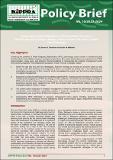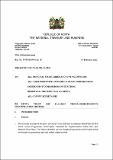| dc.description.abstract | Arid and Semi-Arid Lands (ASALs) in Kenya stand at
the focal point of agricultural challenges and economic
opportunities. Livestock, a mainstay of these regions,
plays a key role in driving economic growth and
ensuring food security for the communities inhabiting
these arid landscapes. The livelihoods of a significant
portion of the population are intricately woven into
the fabric of livestock rearing, making it not just an
economic activity but a way of life. The immense
contribution of the livestock sector to the economy
cannot be overstated, with a substantial share of the
GDP attributed to the livestock industry. As these
regions grapple with the unique challenges posed
by aridity and semi-aridity, harnessing innovative
technologies such as Radio-Frequency Identification
(RFID) becomes imperative to elevate the efficiency,
sustainability, and traceability of livestock management.
Botswana’s successful implementation of the Livestock
Identification and Traceability System (LITS) serves
as a compelling model for Kenya for several reasons.
Firstly, Botswana shares a similar ecological context,
characterized by arid conditions and scarce resources.
The LITS in Botswana effectively navigated these
challenges, showcasing the adaptability of the system
to harsh environmental realities. Secondly, the positive
impact of LITS on Botswana’s livestock sector is
evident in improved disease control, market access,
and overall economic gains. By drawing lessons from
Botswana, Kenya can glean insights into the practical
implementation, challenges faced, and solutions
derived from a comparable context, thus streamlining
the adaptation of RFID technology to its unique ASALs | en |




